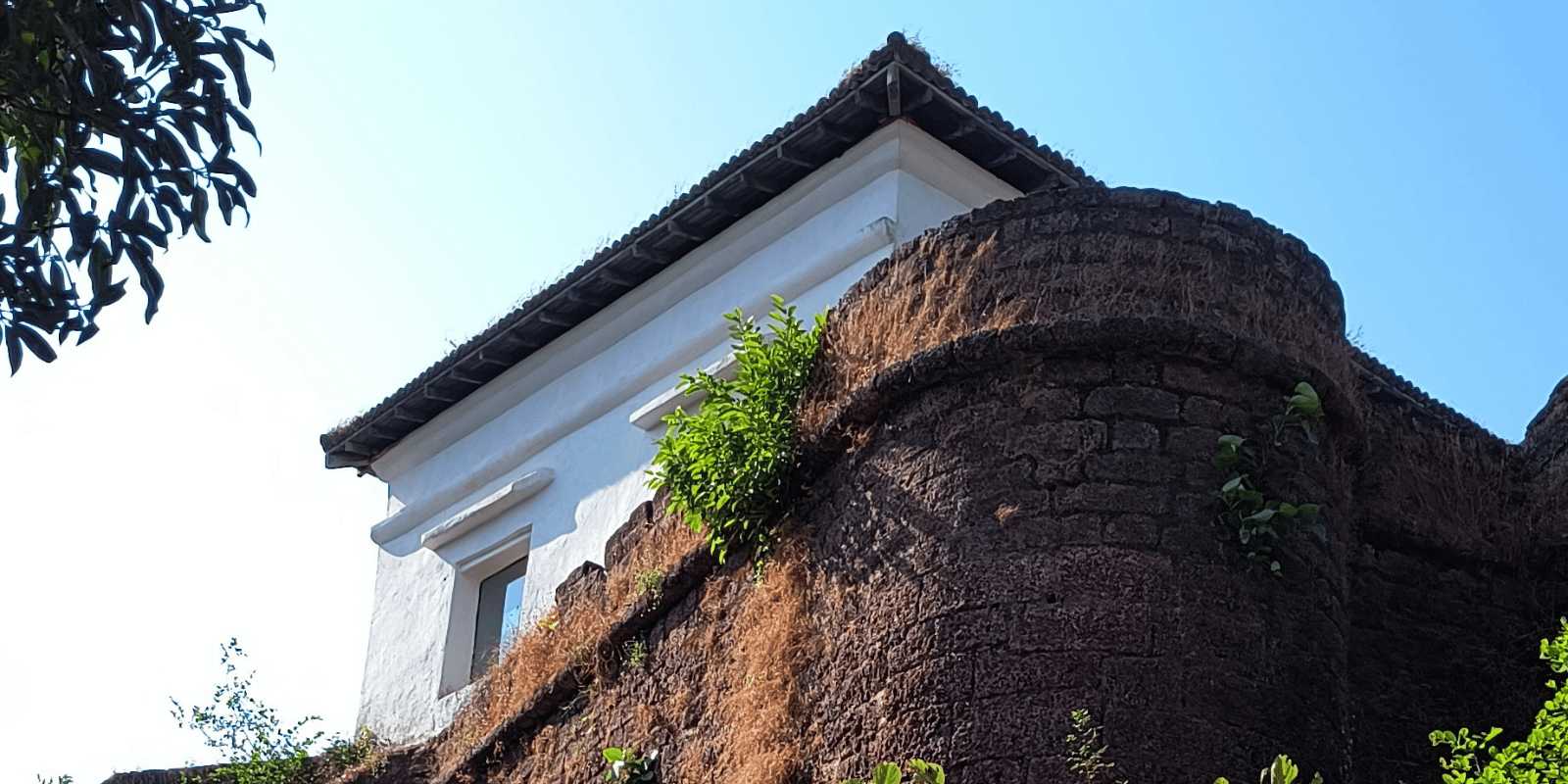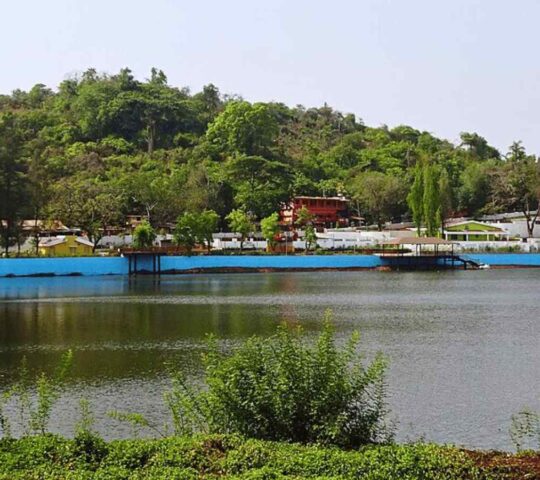Hightlight
-
 Car parking
Car parking
-
 Non smoking
Non smoking
Perched along the banks of the Mandovi River in Goa, Reis Magos Fort is a striking historical structure that dates back to 1551. Originally built by the Portuguese to protect their settlement from invaders, the fort has a rich and fascinating past that offers insight into Goa’s colonial history. With its grand architecture, scenic views, and storied significance, Reis Magos Fort attracts tourists, historians, and locals alike. Restored and opened to the public in recent years, it now stands as one of Goa’s most treasured heritage sites.
History of Reis Magos Fort
The Reis Magos Fort was initially constructed by the Adil Shahi dynasty of Bijapur, only to be seized and rebuilt by the Portuguese in 1551. Named after the nearby Reis Magos Church (meaning “Three Wise Men” in Portuguese), the fort was an essential part of the Portuguese defense system in Goa. Strategically located on the northern bank of the Mandovi River, it protected the Portuguese colony from invasions by enemy forces, particularly the Dutch and Marathas. Over the centuries, it also served as a residence for viceroys and a prison during Goa’s colonial era. By the 20th century, however, the fort was abandoned and fell into disrepair until the late 2000s, when a restoration project, backed by the Goa government and local foundations, revived it as a heritage site open to the public.
Architecture and Design
Reis Magos Fort is an impressive example of Portuguese military architecture. Built using laterite stones and equipped with imposing bastions, thick walls, and a well-planned layout, the fort was designed to withstand attacks. Its triangular structure provides clear views over the Mandovi River, allowing a strategic vantage point for monitoring incoming vessels. Visitors will notice two main turrets at the corners of the fort, which housed artillery during times of war. Inside, you’ll find the ancient prison cells, living quarters, and a chapel dedicated to St. Anthony. There’s also an interesting collection of Portuguese cannons still on display along the fort’s walls.
Restoration and Preservation Efforts
In the 2000s, the Reis Magos Fort underwent a significant restoration project led by the Archaeological Survey of India, the Goa government, and the Helen Hamlyn Trust. This painstaking work involved reinforcing the structure and restoring its original features, such as the stairways, flooring, and stone walls. The restored fort reopened in 2012, and since then, it has become a notable cultural venue in Goa. The restoration has not only preserved the fort but also transformed it into a site for art exhibitions, historical events, and educational programs.
Exploring the Interior: Art and History Exhibits
Reis Magos Fort now hosts an array of exhibits that provide a deep dive into Goa’s colonial history and culture. Inside, you’ll find displays of artifacts, archival photographs, and well-curated exhibitions that tell the story of the fort and the larger history of Goa. One of the most compelling sections is dedicated to Mario Miranda, one of Goa’s most beloved cartoonists, showcasing some of his iconic works that depict Goan life with humor and wit. These exhibits make Reis Magos not just a monument but also a museum that keeps alive the memory of Goa’s rich heritage.
Scenic Views and Photography Opportunities
Due to its strategic hilltop location, Reis Magos Fort offers some of the best views of the Mandovi River and surrounding landscapes. The fort overlooks the city of Panaji, providing visitors with a picturesque panorama of the river meeting the Arabian Sea, with boats and ferries drifting along its course. These scenic vistas make Reis Magos a fantastic spot for photography, especially during sunrise and sunset, when the light enhances the dramatic surroundings and emphasizes the fort’s majestic outline against the water.
How to Reach Reis Magos Fort
Reis Magos Fort is located in the village of Reis Magos in North Goa, about 8 kilometers from Panaji, the state capital. It is accessible by road, and visitors can either take a local bus or hire a taxi from Panaji to reach the fort. The fort is also accessible via ferry across the Mandovi River, adding a scenic touch to the journey. From Calangute and other major tourist hubs in North Goa, it’s a short drive away.
Entry Fees and Timings
The fort is open to the public from 9:30 AM to 5:00 PM on all days except Mondays. The entry fee is INR 50 for adults and INR 25 for children, with additional charges for photography and videography. These fees contribute to the fort’s ongoing maintenance and help fund the cultural and educational activities hosted within its premises.
Visitor Tips for Reis Magos Fort
Reis Magos Fort offers both historical significance and visual splendor, making it an enriching experience for visitors. To fully appreciate your visit, consider joining a guided tour that can provide insights into the fort’s history and architecture. Remember to wear comfortable shoes, as exploring the fort involves climbing some steep steps. If you plan to visit during the day, bring sunscreen and a hat, as the Goa sun can be intense, especially in the afternoons. The best time to visit is early morning or late afternoon, allowing you to avoid peak heat and crowds while enjoying the fort’s tranquil atmosphere and scenic views.
FAQs
What is the historical significance of Reis Magos Fort?
Reis Magos Fort was built by the Portuguese in 1551 and served as a defensive structure, viceroy’s residence, and prison over the years. It played a key role in protecting Goa from external invasions during the colonial period.
Is there an entry fee to visit the fort?
Yes, the entry fee is INR 50 for adults and INR 25 for children, with additional fees for photography.
What can I expect to see inside Reis Magos Fort?
Visitors can explore historical exhibits, ancient prison cells, a chapel, and displays of Mario Miranda’s artwork, as well as enjoy stunning views over the Mandovi River.
How do I reach Reis Magos Fort from Panaji?
Reis Magos Fort is about 7 kilometers from Panaji and can be reached by road or ferry across the Mandovi River.
What are the best times to visit the fort?
The fort is open from 9:30 AM to 5:00 PM every day except Monday, with the best visiting times being early morning or late afternoon for cooler temperatures and fewer crowds.





